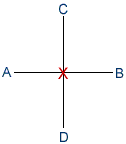4th Dan Testing Requirements
Sam-il Pattern Information:
SAM-IL denotes the historical date of the independence movement of Korea which began throughout the country on March 1, 1919. The 33 movements in the pattern stand for the 33 patriots who planned the movement.
Ready Posture - CLOSED READY STANCE C
Diagram: Plus Sign
Moves:33

Yoo-Sin Pattern Information:
YOO-SIN is named after General Kim Yoo Sin, a commanding general during the Silla Dynasty. The 68 movements refer to the last two figures of 668 A.D., the year Korea was united. The ready posture signifies a sword drawn on the right rather than left side, symbolizing Yoo Sin's mistake of following his Kings' orders to fight with foreign forces against his own nation
Movements - 52
Ready Posture - WARRIOR READY STANCE B
Diagram: Capital I with v's
Moves: 52
Choi-Yong Pattern Information:
CHOI-YONG is named after General Choi Yong, premier and commander in chief of the armed forces during the 14th century Koryo Dynasty. Choi Yong was greatly respected for his loyalty, patriotism, and humility. He was executed by his subordinate commanders headed by general Yi Sung Gae, who later became the first King of the Lee Dynasty.
Ready Posture - CLOSED READY STANCE C
Diagram: Plus Sign
Moves: 46

Training Requirements:
U.S.T.F. mandates require that students be 17.5 years of age or older to test for 3 rd dan black belt.
Students must complete a minimum of thirty months of active training as a 2 nd dan black belt before testing for 3 rd dan black belt. Active training is considered participating in an average of over seven formal classes per month.
Students who attend an I.T.F. International Instructor's course may be eligible to test after twenty four months of active training as a 2 nd dan black belt. Students who receive special permission to test early not only need to attend an I.T.F. Instructors course, but they must also be able to demonstrate an outstanding technique.
Students must complete a minimum of 40 hours of community service. A formal letter verifying the completion of community service must be turned in with the testing packet.
Breaking deductions:
Men :
Senior Men ages 35-39 |
May deduct one board/tile from power breaks |
Senior Men ages 40-44 |
May deduct two boards/tiles from power breaks |
Senior Men ages 45-49 |
May deduct three boards/tiles from power breaks |
Senior Men ages 50+ |
Must break at least one board/tile |
Women :
Senior women ages 30-34 |
May deduct one board/tile from power breaks |
Senior women age 35-39 |
May deduct two boards/tiles from power breaks |
Senior women age 40-44 |
May deduct three boards/tiles from power breaks |
Senior women age 45+ |
Must break at least one board/tile |
Breaking for 4th Dan Testing:
1. Men - Hands:
3 tiles with: |
Downward strike with back fist |
or |
Downward strike with reverse knife-hand |
5 tiles with: |
Downward strike with knife-hand |
2. Men - Feet (Power):
4 boards with: |
Front snap kick |
or |
Turning kick |
or |
Side thrusting kick |
6 boards with: |
Side piercing kick |
3. Men - Feet (Technique):
3 boards - one target with: |
Flying twin foot front snap kick |
or |
Flying twin foot side piercing kick |
1 board - two targets with: |
Flying double kicks |
or |
Flying two combination kicks |
or |
Flying two consecutive kicks |
1. Women - Hands:
1 suspended board with: |
Front punch with forefist |
or |
Side strike with back fist |
or |
Inward strike with reverse knife-hand |
2 tiles with: |
Downward strike with forefist |
or |
Downward strike with back fist |
or |
Downward strike with reverse knife-hand |
3 tiles with: |
Downward strike with knife-hand |
2. Women - Feet (Power):
3 boards with: |
Front snap kick |
or |
Turning kick |
or |
Back piercing kick |
4 boards with: |
Side piercing kick |
1 suspended board with: |
Twisting kick |
or |
Stepping hook kick |
or |
Reverse hook kick |
3. Women - Feet (Technique):
2 suspended boards with: |
Any standing kick |
2 boards - one target with: |
Flying twin foot front snap kick |
or |
Flying hook kick |
or |
180 0 reverse hook kick |
